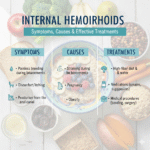Taking care of yourself shouldn’t feel like another task on your to do list. That’s where today’s smart wearables come in tiny, thoughtful devices that quietly help you sleep better, stress less, and move a little more mindfully.
Whether you’re tracking your heart rate or just learning to listen to your body, these 2025 wellness wearables are here to support you not overwhelm you.
In this guide, we’ll explore the best wearables for wellness from smartwatches to rings that make healthy living simpler and more mindful
Why These Devices Matter and Why You Deserve Support

if you’ve ever asked yourself
“Do I really need another gadget?”, that’s totally normal.
Life gets noisy. These small devices aren’t magic, but they can be gentle companions: reminding you to breathe, nudging you to rest, and helping you notice patterns in sleep, stress, and movement. Not to judge just to help.
How Wearable Wellness Tech Helps You Feel Better
Here’s how modern wearables quietly support real-life wellness:
- Sleep tracking: gives clues about sleep cycles and wakes so you can make small changes for better rest.
- Stress & readiness: sensors like HRV show how your body responds to daily life.
- Mindfulness nudges: guided breaths and reminders to pause.
- Movement encouragement: gentle prompts to stand, stretch, or move.
- Pattern recognition: over time they help you see how sleep, stress, and activity interact.
If you want a research-backed overview of how these devices can help (and their limits), see Harvard Health.
Table of Contents
Top Wearables for Wellness in 2026 (with estimated U.S. prices)
Prices are approximate U.S. retail (late 2025) — please verify current pricing before publishing or endorsing purchases.
1. Apple Watch Series 10 — the all rounder
Estimated price: ~US $299–$399
Why it’s useful: Tracks heart health, sleep, stress indicators and temperature trends. Works best if you use an iPhone and want one device that blends lifestyle features with health tracking.
Learn more: Apple Health & Apple Watch
2. Oura Ring Gen 4 — tiny but mighty
Estimated price: ~US $349–$399
Why it’s useful: A discreet, screen-free ring focused on sleep, readiness and recovery. Great for people who dislike wrist devices but want continuous insights.
Learn more: Oura — Science & Features
3. Fitbit Sense – your gentle daily coach
Estimated price: ~US $249–$299
Why it’s useful: Strong stress and sleep features (including EDA for stress response) and friendly daily readiness cues. Works well for both Android and iPhone users.
Helpful reading: CDC — Coping with Stress
4. Garmin Venu – data-driven motivation
Estimated price: ~US $449
Why it’s useful: Combines athletic tracking (GPS, workouts) with wellness metrics like Body Battery and recovery tracking — ideal if you want deeper training & recovery insights.
Official info: Garmin Health & Research
5. Withings ScanWatch 2 – elegant and evidence-based
Estimated price: ~US $349–$399
Why it’s useful: A hybrid watch with ECG, SpO₂ and sleep-apnea screening — good for people who prefer a traditional look with medical-style sensors.
Medical reference: Mayo Clinic — ECG overview
How to Choose the One That Feels Right for You
Ask yourself a few gentle questions:
Do you prefer a watch or a ring?
What’s your main goal (sleep, stress, movement)?
What feels comfortable for all-day wear?
The device you’ll use is better than the fanciest device you won’t.
A Little Compassionate Reminder
Your device is a tool, not a verdict. If the numbers aren’t “perfect,” that’s OK — they’re information, not shame. Use the data kindly: small changes (an extra 15 minutes of sleep, a breathing break) add up. For guidance on using digital tools for self-care, see the World Health Organization.
FAQ — Wearables and Wellness in 2026
Q1: Are wearables accurate enough for medical use?
A: Most consumer wearables are accurate enough for tracking trends (heart rate, sleep stages, activity) but they are not substitutes for medical-grade diagnostics. Use them to notice patterns and bring concerning trends to your healthcare professional. See Mayo Clinic and NIH research for more.
Q2: Do I need to pay a subscription?
A: Not necessarily. Core tracking (steps, basic heart-rate, basic sleep) usually works without a subscription. Premium plans often add deeper analytics (readiness scores, advanced recovery insights). See Harvard Health for context about benefits.
Q3: Are wearables safe to wear all day?
A: Yes — consumer wearables use very low-energy sensors and Bluetooth. Public health guidance indicates non-ionizing fields from such devices are well below safety limits. For reference, see the WHO info on electromagnetic fields.
Q4: Which wearable is best for stress and mindfulness?
A: Devices like the Apple Watch Series 10 and Fitbit Sense 3 excel at stress tracking (HRV, guided breathing). They can help you notice stress patterns and practice calming tools. CDC guidance on stress management can be helpful alongside device use: CDC — Coping with Stress.
Q5: Can wearables help with chronic health conditions?
A: Wearables can support monitoring (e.g., spotting irregular rhythms, sleep problems), but they don’t replace medical evaluation. Always discuss concerning findings with your clinician. For research and guidance, see the NIH overview.
Final Thoughts
Choosing a wearable is less about brand and more about what you’ll wear consistently. Use it with kindness let it remind you to pause, breathe, and care for yourself a little more each day.
— The PeasHealth Team







Leave a Reply